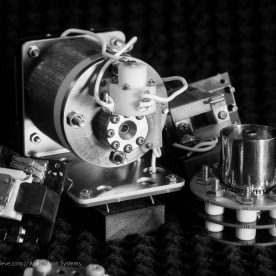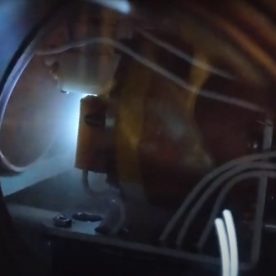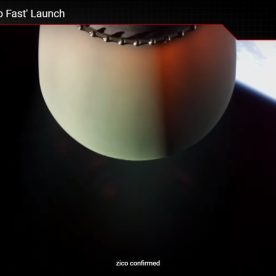Welcome to the first post in the Applied Ion Systems blog series. Applied Ion Systems is a self-funded research initiative that explores the research, design, engineering, testing, and development of a wide range of physics systems, focusing primarily on devices involving high and ultra-high vacuum applications for research into charged particle beams, plasma sources, ion thrusters, and a host of other related topics. A wide and diverse range of topics will be explored and covered, including high vacuum, high voltage, pulsed power, nuclear, accelerator physics, electrical, mechanical, material science, aerospace, thermal, instrumentation, design, and simulation.
One of the key features that will be focused upon at Applied Ion Systems is the development of high-tech physics systems at the hobbyist level budget. Normally, high vacuum and related plasma physics systems are often encountered at the large scale research or industry level, with state-of-the-art labs with millions and even billions of dollars of research funding, grants, and resources. This may seem daunting and formidable to the average hobbyist who might want to explore a variety of physics systems. Despite the cost and complexity of the experiments and devices at the large-scale level, the physics and engineering is much more approachable than one might initially expect, and there are many hobbyist communities dedicated to these pursuits that have shown such research and devices can, and are, actively explored and pursued at the budget level many orders of magnitude lower. For example, one of the largest and most prevalent of these groups is the fusor.net group, which has been online for many years now and has been the dominant and pioneering collaboration of amateur fusion efforts, specifically focusing on the development and optimization of neutron producing fusor systems. Groups such as this and others have an incredible amount of combined knowledge, accumulated from many decades of experience of professionals and hobbyists looking to push into the frontiers of science on their own.
Applied Ion Systems aims to not only document personal efforts into the exploration of vacuum systems and energy physics, but to establish and provide resources to allow for cutting edge engineering at a lower-level budget. Presently, there is an incredibly diverse array of free software and resources available to design and analyze systems at the professional engineering level with a minimal budget. Such analysis include CAD, thermal modelling, electrostatics modelling, magnetics, ion beam simulation, and particle interaction simulations. With these tools, a dedicated and well studied experimenter can design, simulate, and optimize small scale high tech physics systems at a much more sophisticated level than normally encountered at hobbyist budgets. Applied Ion Systems will provide documentation, files, and data in these pursuits to make such development much easier and more accessible using free and low cost tools, coupled with a wide variety of solutions that can be explored and manufactured on a minimal budget.







